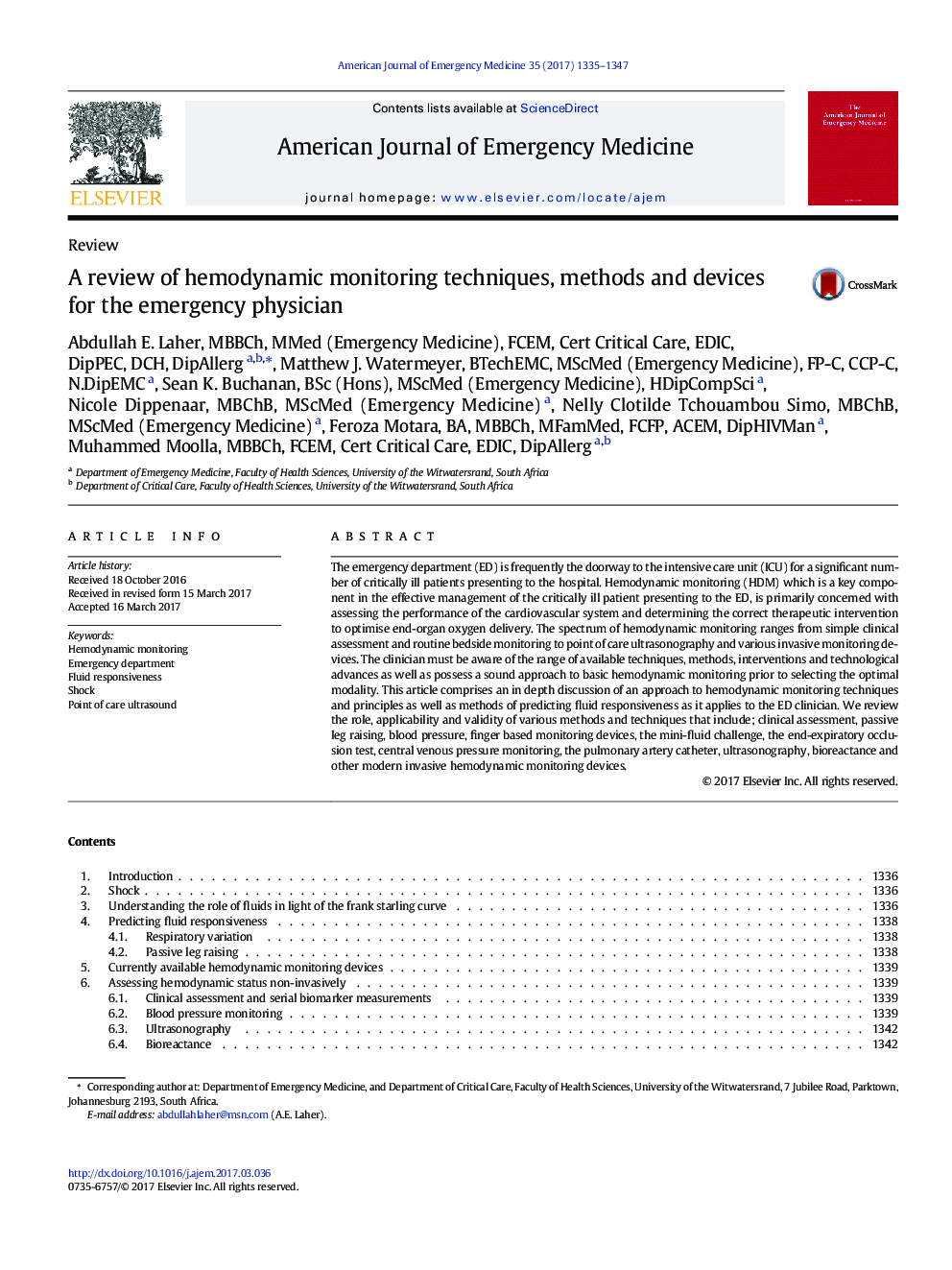| Article ID | Journal | Published Year | Pages | File Type |
|---|---|---|---|---|
| 5651107 | The American Journal of Emergency Medicine | 2017 | 13 Pages |
The emergency department (ED) is frequently the doorway to the intensive care unit (ICU) for a significant number of critically ill patients presenting to the hospital. Hemodynamic monitoring (HDM) which is a key component in the effective management of the critically ill patient presenting to the ED, is primarily concerned with assessing the performance of the cardiovascular system and determining the correct therapeutic intervention to optimise end-organ oxygen delivery. The spectrum of hemodynamic monitoring ranges from simple clinical assessment and routine bedside monitoring to point of care ultrasonography and various invasive monitoring devices. The clinician must be aware of the range of available techniques, methods, interventions and technological advances as well as possess a sound approach to basic hemodynamic monitoring prior to selecting the optimal modality. This article comprises an in depth discussion of an approach to hemodynamic monitoring techniques and principles as well as methods of predicting fluid responsiveness as it applies to the ED clinician. We review the role, applicability and validity of various methods and techniques that include; clinical assessment, passive leg raising, blood pressure, finger based monitoring devices, the mini-fluid challenge, the end-expiratory occlusion test, central venous pressure monitoring, the pulmonary artery catheter, ultrasonography, bioreactance and other modern invasive hemodynamic monitoring devices.
